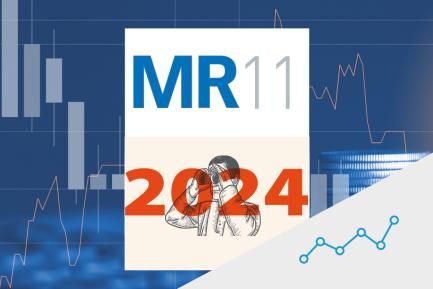
Russia unleashes a sell-off in the financial markets

Throughout February, the escalation of geopolitical tensions between Russia and the West leaked into the global financial markets through increased risk aversion and volatility, which intensified with the onset of the conflict. The invasion of Ukraine by the Russian army, an event which analysts and investors had considered unlikely, pushed aspects such as inflation and the speed of the Fed’s interest rate hikes, which had previously been the focus of attention, to the background. The reaction from the financial markets was as expected: a flight to quality, significant stock market corrections, heightened volatility and, in this case, rises in commodity prices. All of this shows that investors had begun to reassess their forecasts for how the conflict could affect value chains, inflation and the pace of economic growth.

In the face of the conflict, the commodity markets reacted with sharp price increases, especially in energy goods. Investors’ fears of mismatches in Russian supplies to Europe (Europe imports around 30% of its crude oil from Russia and more than 40% of its gas) fuelled tensions in both markets. On the one hand, the price of a barrel of Brent, which had already risen since 2021 due to strong growth in demand following the pandemic, surged and ended the month of February above 100 dollars a barrel, the highest level since 2014. On the other hand, the price of natural gas in Europe (for which the Dutch TTF is the benchmark index) also registered a sharp increase amounting to 40% between the beginning of the year and the end of February, in a context of the complex European gas market (see the Dossier «Energy prices: present and future» in the MR01/2022). In addition to the boom in energy prices, there were also significant increases in the prices of several basic metals, such as nickel, aluminium and palladium, of which Russia is one of the largest producers. The price rally also occurred in some cereals such as wheat, with Russia and Ukraine accounting for some 25% of total global production.

Before the start of the conflict, both the Fed and the ECB had expressed concern about the persistence of high inflation and had stated their intention to control it by withdrawing the monetary stimulus deployed during the pandemic and by raising their reference interest rates. The Fed even went much further, clarifying the immediacy of its roadmap at its January meeting. Alongside the strong recovery in the US labour market, this stance led investors to anticipate up to five interest-rate hikes during 2022. In the case of the ECB, the institution maintained a more dovish message, marked by the gradual reduction and eventual ending of asset purchases, which will be followed by the normalisation of interest rates. This led some investors to expect interest rate changes by December this year. However, the outbreak of the conflict and its potential implications for inflation and economic growth in the two regions have led to some changes in investors’ expectations. With regard to the Fed, investors still expect the monetary institution to maintain its roadmap, albeit with a potentially less aggressive rate hike plan (in March, it could raise rates by 25 bps instead of 50 bps as previously anticipated). In the case of the ECB, meanwhile, investors point to a more cautious stance on the part of the monetary institution, with rate hikes potentially being delayed until the end of Q1 2023. This change in investors’ expectations in the face of an uncertain outlook also had an impact on both economies’ sovereign yield curves, which registered a marked drop in yields across all maturities (despite an improvement in the month on aggregate) and a flattening of their slopes.


In the currency markets, as is common during episodes of risk aversion, the dollar emerged as a safe haven and appreciated against other global currencies. The strength of its economy and investors’ expectations of a rate hike by the Fed also supported the currency’s strength. On the opposite end of the spectrum was the Russian rouble. The economic
and financial sanctions which the West imposed on Russia weakened the currency against the dollar, pushing it to all-time lows. In a failed attempt to curb further depreciation of its currency, the Bank of Russia decided to raise the benchmark interest rate from 9.50% to 20%, and imposed numerous restrictions on the sale of Russian financial assets by foreign investors.

Another consequence of the change of scenario was the fall registered in global stock markets. The volatility shown by the major stock indices during the first few weeks of February intensified in the closing days of the month with Russia’s incursion into Ukraine. Thus, the benchmark indices in both the US and the euro area amassed losses of more than 8% between the beginning of the year and the end of February, and this weakness spread to most sectors, with the exception of energy and technology. In addition, emerging countries registered declines in their main indices, particularly in the economies of Eastern Europe. However, it was the Russian stock market that experienced the biggest declines in February (–30%), in the face of the stock sell-off triggered by the sanctions imposed on the country’s economy.



